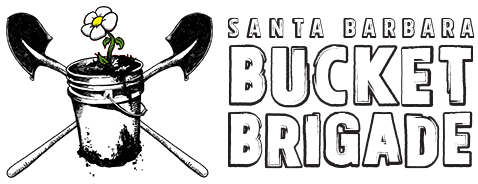Community Self-Rescue (CSR)
In the wake of the Thomas Fire and 1/9 Debris Flow, the Bucket Brigade deployment plan was based on the concept of the Incident Command System (ICS) used by professional first responders and adapted to allow for rapid scaling of spontaneous volunteer and NGO response during the recovery phase of the disaster. We worked steadily through the recovery process, field-testing and adjusting our methodologies based on dynamic and unforeseen circumstances. We realized that our deployment system was an incredibly effective tool for interagency cooperation and collaboration as well as for the safe deployment of thousands of volunteers in a complicated environment. We began documenting this system for second-response and recovery and have developed a unique solution to the ever-growing problem of disaster relief. We call this model Community Self-Rescue (CSR).
CSR is a direct approach to disaster recovery that efficiently deploys people and resources within a community to respond to urgent needs using local knowledge. Instead of waiting for outside agencies to organize and facilitate the recovery process, CSR empowers the community to work as a team to help survivors get their lives back on track and to leverage outside aid for the benefit of the community.
The Bucket Brigade’s CSR approach is bolstered by the fact that it is led by trusted local residents who understand the needs of impacted neighborhoods and can align with local NGOs and businesses for equipment, meals, and networking. Most importantly, by responding to urgent needs in a rapid and coordinated fashion, the Bucket Brigade galvanized the community belief that, by working together, we could fully recover from the worst disaster in Santa Barbara County history.
Once unified in this way, the greater community implemented one of the biggest and most successful recovery efforts in the region. This is the fundamental tenet of community resilience: A community united in the belief that by working together in a coordinated way we can get through whatever disasters or crises the future may bring. Our CSR system is an essential component of this resilience platform and, with proper scaling, could be replicated statewide.
Moving forward, we are expanding our scope beyond response and reaction into the work of disaster prevention, preparedness, and resiliency building. Our primary focus for 2022 is to begin community volunteer leadership training in Community Self-Rescue. Our goal is to train a generation of volunteer leaders and to create a distributed resource of trained second-responders throughout the community.




